Snakes provide numerous benefits to people and to the environment. In nature, they play an important role in foodwebs by controlling animals that can become pests (e.g. rats and mice). In the laboratory, numerous medications have been developed through investigation of properties of snake venom. Research on the venom produced by one of Florida's snakes (pygmy rattlesnake, Sistrurus miliarius) has enabled the development of a life-saving drug that can be used to thin the blood of human patients experiencing heart attacks.
Most snakes are secretive and rarely bother people. However, there are situations where some snakes can become dangerous. In this document, we present some facts about snakes, describe dangers they may cause, and provide suggestions on how to cope with these dangers.
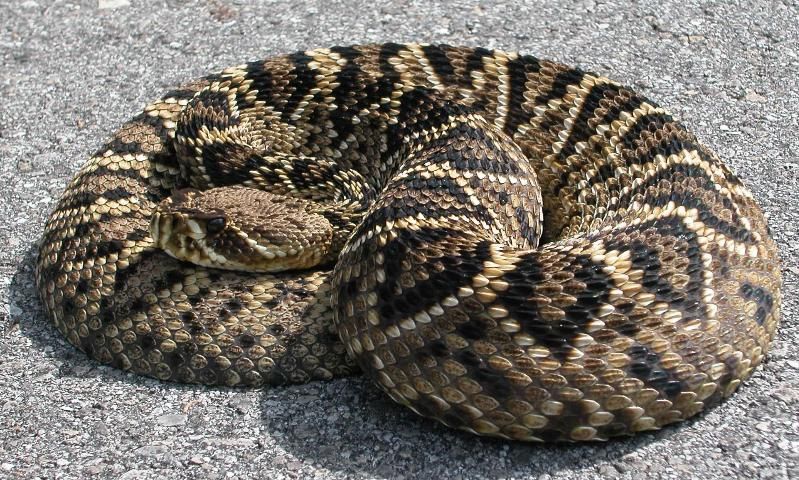
Credit: Steve Johnson
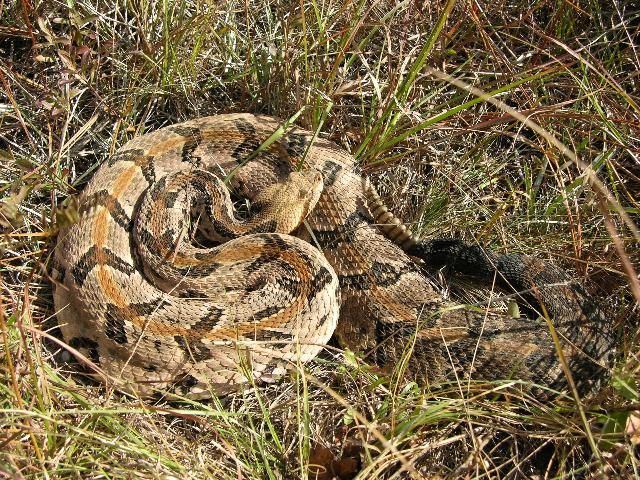
Credit: Steve Johnson
Getting to Know Snakes
- There are ~3,000 species of snakes worldwide; approximately 50 species are native to Florida.
- Many snakes can be identified by their colors and patterns of markings. Guides exist to help identify Florida snakes according to whether their coloration is uniform, striped, or blotched, or whether it has crossbands or diamonds (https://ufwildlife.ifas.ufl.edu/snakes/florida.shtml).
- Many species of Florida's snakes do not thrive in residential areas; those that do are often secretive and so are rarely encountered by people.
- All snakes are predators, and they provide benefits to humans by consuming rodents (i.e., mice and rats) and insect pests.
- Snakes use their sense of smell to track prey. Some snakes are also capable of sensing the heat given off by warm-blooded animals. All snakes can detect movements of other animals through the vibrations the animals create while moving about.
- Snakes swallow prey whole because they cannot bite or tear their food to pieces. They have skulls with flexible joints and highly mobile jaws that allow them to swallow prey much larger than their heads.
- Snakes often become dormant after consuming prey to allow digestion to occur. If disturbed shortly after eating a large prey item, a snake may regurgitate the prey to escape more quickly.
- Some non-venomous snakes (the eastern indigo snake, Drymarchon couperi and common kingsnake, Lampropeltis getula) eat venomous snakes.
- Only six of Florida's snakes are venomous (the pygmy rattlesnake, Sistrurus miliarius, eastern diamondback rattlesnake, Crotalus adamanteus, timber rattlesnake, Crotalus horridus, cottonmouth, Agkistrodon piscivorus, copperhead, Agkistrodon contortrix, and the eastern coral snake, Micrurus fulvius). These snakes are among the least frequently encountered by people (Figures 1–6).
- Several species of large constrictor snakes have invaded Florida (the Burmese python, Python molurus, North African python, Python sebae, and the boa constrictor, Boa constrictor). These snakes present great risks to native wildlife because they produce many offspring, travel long distances, have broad diets that allow them to eat many native birds and mammals, and may outcompete native snakes (Figure 7 and 8).
- Most native snakes lay eggs and most females abandon these eggs soon after laying. In contrast, female pythons stay with their eggs until they hatch, and boa constrictors give birth to live young. Florida's pitvipers (rattlesnakes, cottonmouth, copperhead) give birth to live young as well.
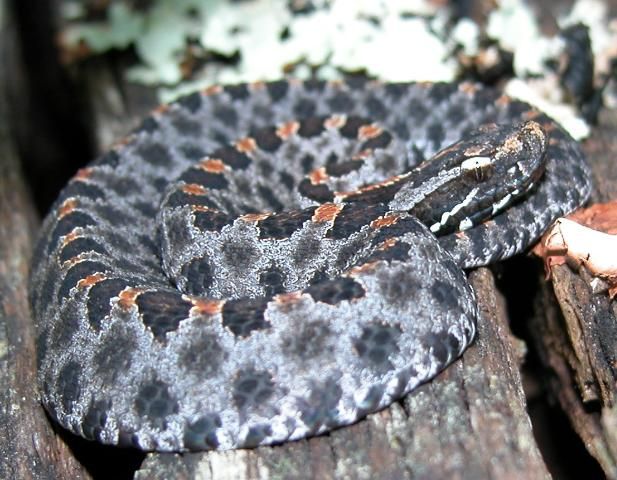
Credit: Steve Johnson
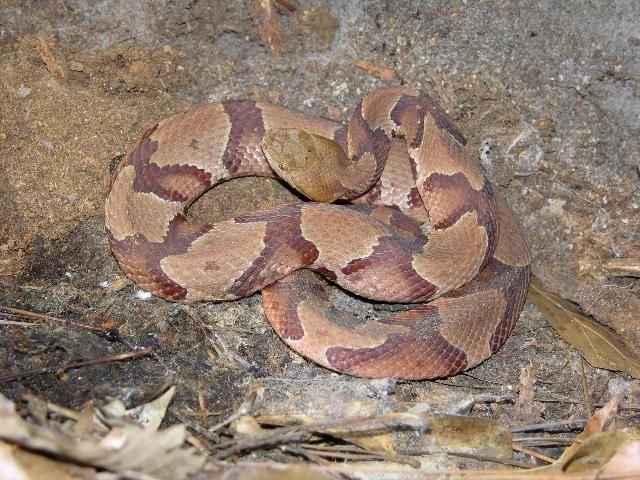
Credit: Steve Johnson
Potential Risks and Damage Associated with Snakes
- Non-venomous rat snakes may invade chicken coops to eat eggs or chicks.
- Poisoning rodents in your yard or garage in an attempt to remove food for snakes could lead to secondary poisoning of pets that eat poisoned rodents.
- Snakes can strike without being coiled.
- Rattlesnakes can strike at up to 2/3 of their body length. Adult diamondbacks are typically 3–6 feet in length, so their strike distance can exceed 3 feet.
- Attempting to harass, handle, or kill a snake significantly increases your chances of being bitten. Most snake bites occur on the hands and arms of people trying to catch or kill snakes.
- 7,000–8,000 people are bitten by venomous snakes in the United States each year. Only about 5–6 people typically die from these bites. Rattlesnakes are responsible for the vast majority of fatalities.
- Poking or prodding a recently killed snake can cause a convulsive contraction and even a bite because reflexes still work up to an hour after a snake is killed. Never handle a newly killed venomous snake.
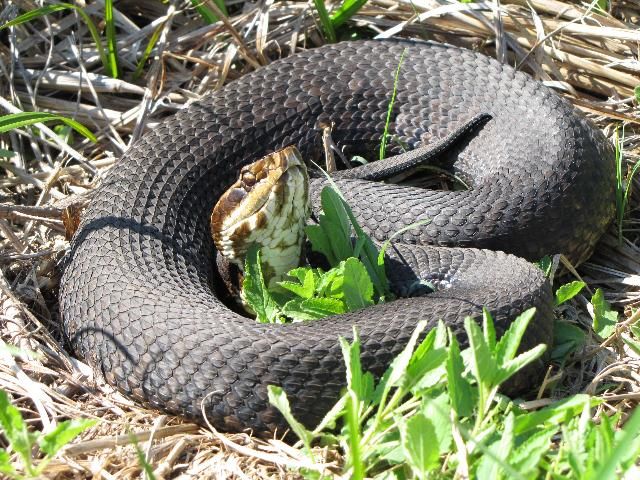
Credit: Steve Johnson
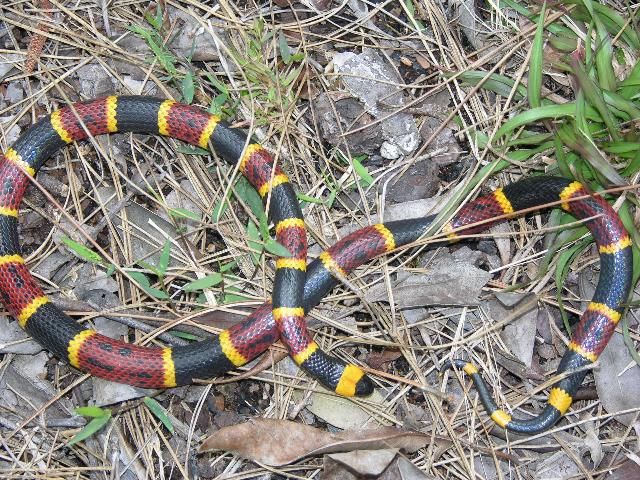
Credit: Steve Johnson
How to Prevent Risks and Damage Associated with Snakes
Learn to identify snakes in your area so you know which are harmless and which are venomous. Only six of Florida's ~50 resident snakes are venomous, and two of these venomous species occur only in north Florida and the panhandle (https://ufwildlife.ifas.ufl.edu/venomous_snake_identification.shtml).
Develop an emergency action plan with your family in case someone is bitten by a venomous snake (https://edis.ifas.ufl.edu/publication/UW261). If someone gets bitten by a venomous snake call 911 immediately. Remove rings, watches, or restrictive clothing near the bite. Wash the bite with soap and water. If the bite occurs in an extremity (hand, foot, etc.), keep it below the heart. Make note of the time of the bite and symptoms as they develop to inform emergency personnel.
If someone gets bitten by a venomous snake, do not wait for symptoms to develop before calling 911; do not attempt to catch or kill the snake; do not apply a tourniquet or ice near the wound; do not attempt to suck out venom.
Preventing snake bites can be accomplished by wearing boots when working in tall grass, in deep leaf litter, and near piles of rocks. Wear thick work gloves when dismantling piles of brush and debris. Do not handle or harass venomous snakes.
Habitat modifications can make your yard less attractive to snakes. Remove sources of cover such as brush piles, rock piles, tall grass, boards, and other debris. Stack woodpiles tightly so there is minimal space between logs. If you've seen a snake in your yard, identify the species and learn what food and cover it prefers. Remove whatever food and cover it prefers so that it moves elsewhere.
Building maintenance can prevent snake entry indoors. Patch, cover, seal, or reduce spaces under doors, holes in walls, vents in roofs, gaps where plumbing or wiring enters the building, or openings on or at the edge of roofs.
If you spot a snake, the safest option is usually to do nothing and simply wait for it to move away. Most wild snakes are not aggressive, and will flee when they see you unless they are cornered. If you find a snake in your yard or garage, leave it alone. Shut the door to your home but leave the external door to a garage open part-way so the snake can exit at will.
Harassment can be used to coax a snake to leave a yard. Spray the snake gently with a garden hose while standing far away if you want to convince it to leave. The snake will want to move to the nearest place to hide, so aim the spray to direct the snake away from you and towards some form of cover.
Capture is an option. Most species can be caught by carefully coaxing the snake into a garbage can or large plastic bin using a broom (https://www.floridamuseum.ufl.edu/florida-snake-id/safely-coexist-with-snakes/).
Silt fencing can be an effective barrier to exclude snakes, but it is an expensive control option suitable only for relatively small areas such as a garden.
Toxicants and repellents are not a viable means of controlling or deterring snakes. We do not advocate using commercially available glue traps, as they are often not a humane way to capture snakes and snakes frequently must be handled to remove them from the trap.
Call a professional if you need to deal with a venomous snake and don't want to take chances. The Florida Fish and Wildlife Conservation Commission has a list of professionals with snake handling skills, listed according to county of operation (https://app.myfwc.com/HGM/NWT/NWTSearch.aspx).
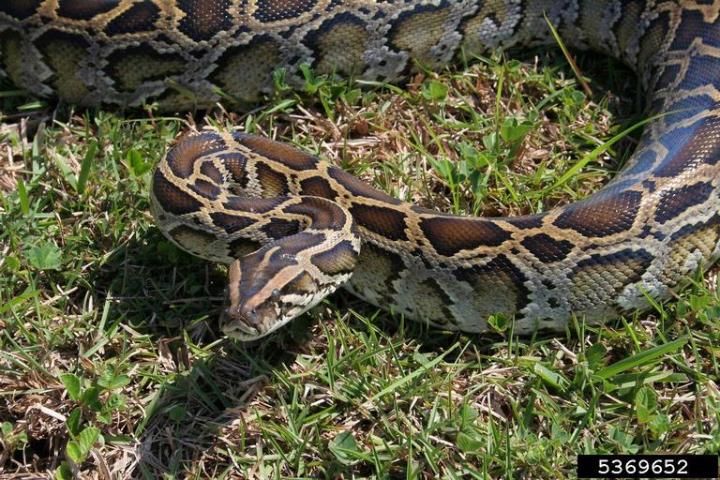
Credit: Skip Snow

Credit: Steve Johnson
More Information
- UF/IFAS, "Dealing with Snakes in Florida's Residential Areas—Preventing Encounters," https://edis.ifas.ufl.edu/publication/UW260
- UF/IFAS, "Dealing with Snakes in Florida's Residential Areas—Identifying Commonly Encountered Snakes," https://edis.ifas.ufl.edu/publication/UW258
- Florida Fish and Wildlife Conservation Commission, "Living with Snakes," https://myfwc.com/conservation/you-conserve/wildlife/snakes/
- Center for Disease Control, "Venomous Snakes," https://www.cdc.gov/niosh/topics/snakes/